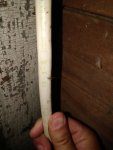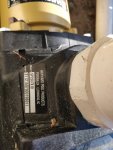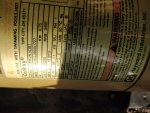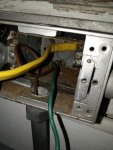Hello,
I am troubleshooting an electrical issue with my Hayward Super Pump (SP2607X10) where the cord/plug overheats and trips the thermal protection of my smart plug/timer (TP-Link Kasa KP-400). The pump motor itself doesn't seem to get too hot as I can hold my hand on it after it trips and its not burning.
This started at the end of last year when I went to unplug my old timer at the end of the season (Intermatic P1121) and realized the plastic on the timer has melted and I couldn't remove the pump plug from it. Figured it was a timer issue and got a new one for this year.
This year started off fine running the pump 24/7 to SLAM but after a few days, the new timer kept tripping and shutting off the pump.
So far I have tried:
1. Cleaning up the pump plug with sandpaper/steel wool to remove any possible corrosion
2. Replaced the electrical outlet (20 Amp, 125V outdoor GFCI)
After taking those steps, it only seems to trip once every couple days and seems random. I inspected the run back to the subpanel in my garage and it all looks good to me. From the subpanel its a 20 Amp breaker -> 12/2 nmc -> 20 Amp, 125V Outdoor GFCI -> KP-400 timer -> Pump Plug. I think the KP-400 timer is only rated for 15 Amps, but my pump states 15 Amps so shouldn't be an issue unless I am missing something.
Some pics attached, but let me know what my next steps in troubleshooting this should be. Thanks!



I am troubleshooting an electrical issue with my Hayward Super Pump (SP2607X10) where the cord/plug overheats and trips the thermal protection of my smart plug/timer (TP-Link Kasa KP-400). The pump motor itself doesn't seem to get too hot as I can hold my hand on it after it trips and its not burning.
This started at the end of last year when I went to unplug my old timer at the end of the season (Intermatic P1121) and realized the plastic on the timer has melted and I couldn't remove the pump plug from it. Figured it was a timer issue and got a new one for this year.
This year started off fine running the pump 24/7 to SLAM but after a few days, the new timer kept tripping and shutting off the pump.
So far I have tried:
1. Cleaning up the pump plug with sandpaper/steel wool to remove any possible corrosion
2. Replaced the electrical outlet (20 Amp, 125V outdoor GFCI)
After taking those steps, it only seems to trip once every couple days and seems random. I inspected the run back to the subpanel in my garage and it all looks good to me. From the subpanel its a 20 Amp breaker -> 12/2 nmc -> 20 Amp, 125V Outdoor GFCI -> KP-400 timer -> Pump Plug. I think the KP-400 timer is only rated for 15 Amps, but my pump states 15 Amps so shouldn't be an issue unless I am missing something.
Some pics attached, but let me know what my next steps in troubleshooting this should be. Thanks!





